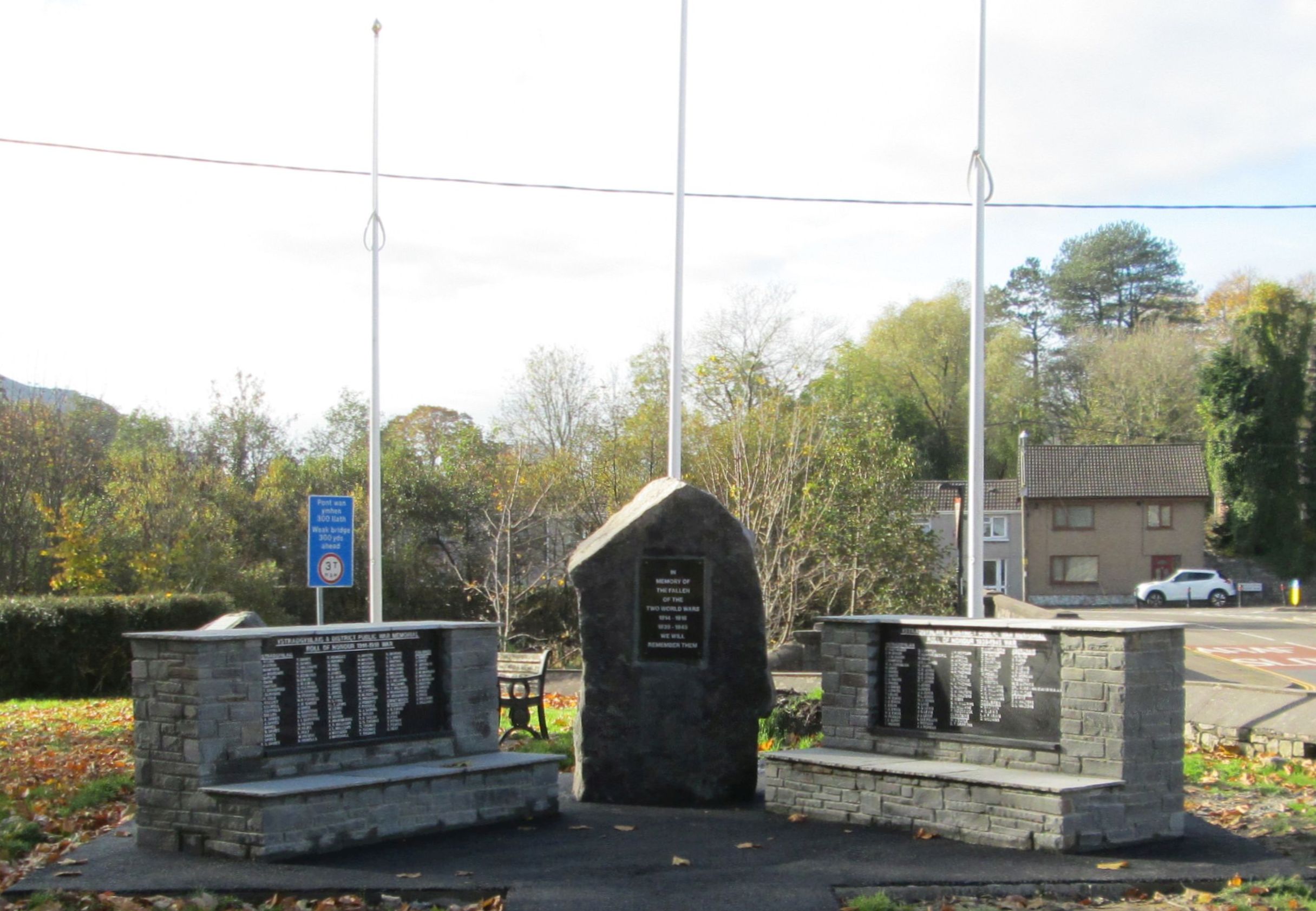Ystradgynlais & District
History and Heritage
Bethlehem Chapel, Caerlan
Bethlehem Congregational Chapel
From the Llais 21st April 1961 comes this fascinating article on the history of Bethlehem Chapel, Caerlan
THE CHAPELS ALWAYS CLOSE TO INDUSTRIAL LIFE
This article, to mark the centenary of Bethlehem Congregational Chapel Abercrave, is written by Mr D Watkins Morgan, son of the late Mr D S Morgan, a trustee deacon.
The celebrations at Bethlehem Congregational Church Abercrave, in connection with the centenary of the church, marked the completion of 100 years of activity in which the spiritual life of the people has been closely connected with the industrial life of Abercrave.
The story of Bethlehem begins much further back than the building itself. Long before it was erected, the Industrial Revolution had made a strong impact on the village and had attracted from country areas a number of families which had concentrated at Caerlan, Penrhos and at the Ynyscedd (Isaf and Uchaf) on the banks of the newly constructed canal.
Many of these people had become members of Tynycoed Chapel, founded about 1750, in the locality where nonconformity could be traced to the days of religious persecution under the Conventicle Act of 1664, which forbade more than five persons to assemble the religious worship except in accordance with the particles in the Established Church.
'LONG ROOM ENGAGED'
But Tynycoed proved to be too far away. Consequently weekly devotional meetings and Sunday schools were held at various farmhouses and cottages under the Elders at Tynycoed. Under the Ministry of Robert Lewis he engaged the 'Long Room' at the Castle Hotel for specific purposes of worship.
This arrangement met the situation admirably for a time but later a religious revival of 1858- 1859, a permanent place of worship at Caerlan became imperative. Tynycoed welcomed the idea and in a short time a committee embarked on the project, the financial responsibility of which was to be shouldered by the trustees of Tynycoed.
Three prominent members of this committee were Edward Williams (Y Gof), William Watkins Ty-Mawr and John Powell a local grocer. The former, as an Elder at Tynycoed, represented the inhabitants in this part of the district, William Watkins served as an architect and John Powell acted as secretary. Bethlehem owes these men a great debt of gratitude, their devotion, courage and leadership inspired the faithful worshippers.
Early in 1860, Robert Lewis, the minister, laid the foundation stone on which the baby son of John and Gwenllian Walters, of Waunton Form, was christened and in 18 months - May 1861 - worship began.
The actual consecration is did not take place until 1864. To that date Bethlehem was known as Ty Cwrdd or the Meeting House.
After the consecration the law demanded a new body of trustees but the Trust Deeds of Tynycoed remained. These deeds remained in force at Bethlehem until 1937 when special ones were legally drawn out.
The congregation at Bethlehem in 1861 consisted of about 60 members most of the men folk being coal miners, a few were farmers, grocers and craftsmen.
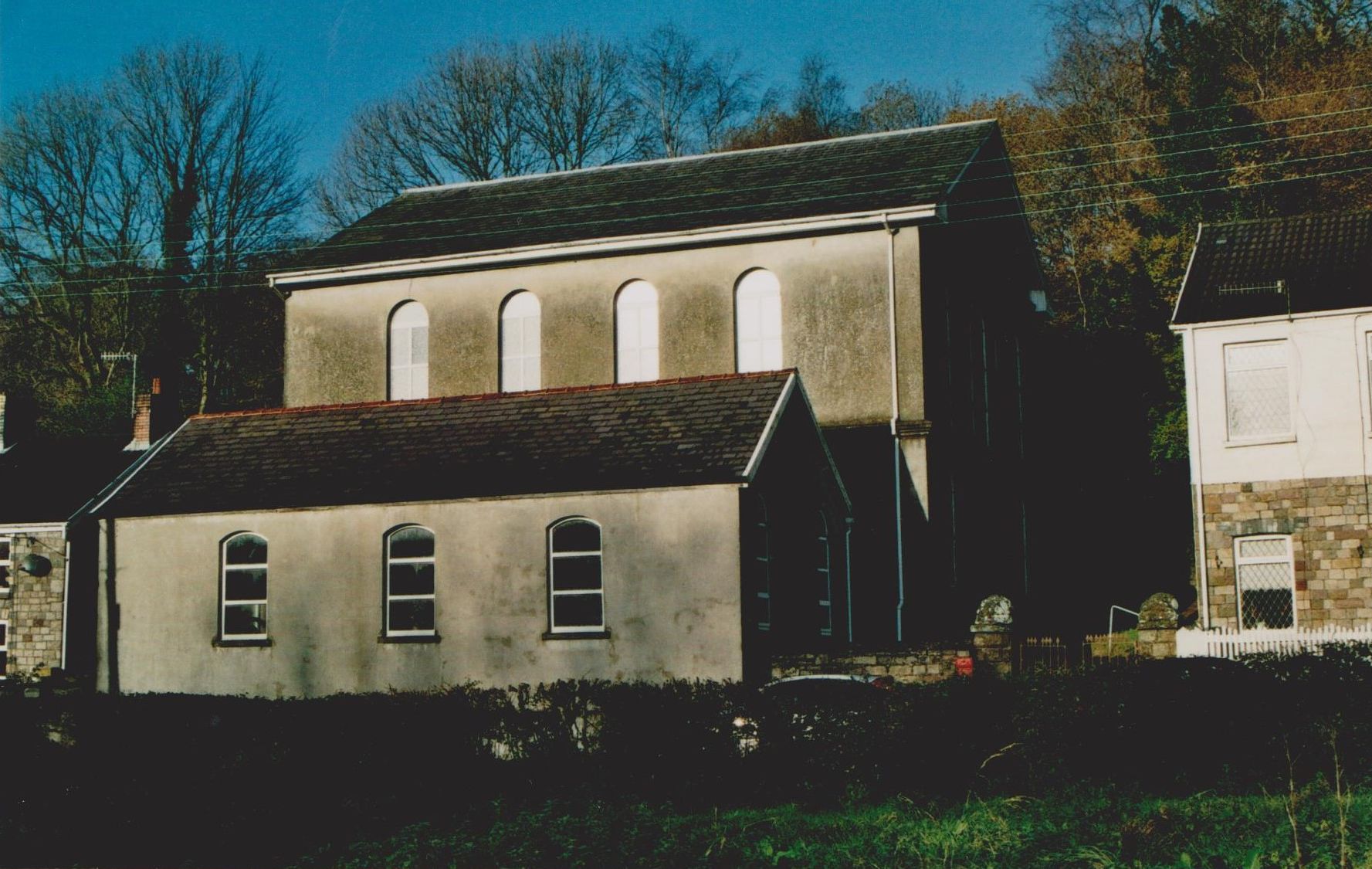
Bethlehem Chapel, Caerlan, seen from the front face-on
BLAZED THE TRAIL
These founder members blazed the trail, experienced all the industrial tribulations and domestic trouble but never submitted to defeat. In every emergency they employed the aid of God for support and laid a solid foundation and today after 100 years, Bethlehem stands facing the future.
If a prophecy made by a pious old lady at a weekly devotional meeting the time of Lewis Jones, who followed Robert Lewis as Minister is true, the future is assured.
This woman, it is recorded by Lewis Jones in his notebook, said: "Ni fydd llewyrch byth ar Bethlehem os na fydd un neu eldau a godwyd yn yr Eglwys neu a ddisgynna o'r bobi a sylfaenoedd yr achos yn ddiacon neu ddiaconaid" (There will be no prosperity in Bethlehem unless one or two deacons are descendants of the original founders).
And on this memorable occasion those words are very apt. The diaconate today consists of a few people brought up in the chapel while the secretary, Mr Llewelyn John Powell, is a grandson of the original holder of the office.
Also, a number of the members can claim descent from the pioneers.
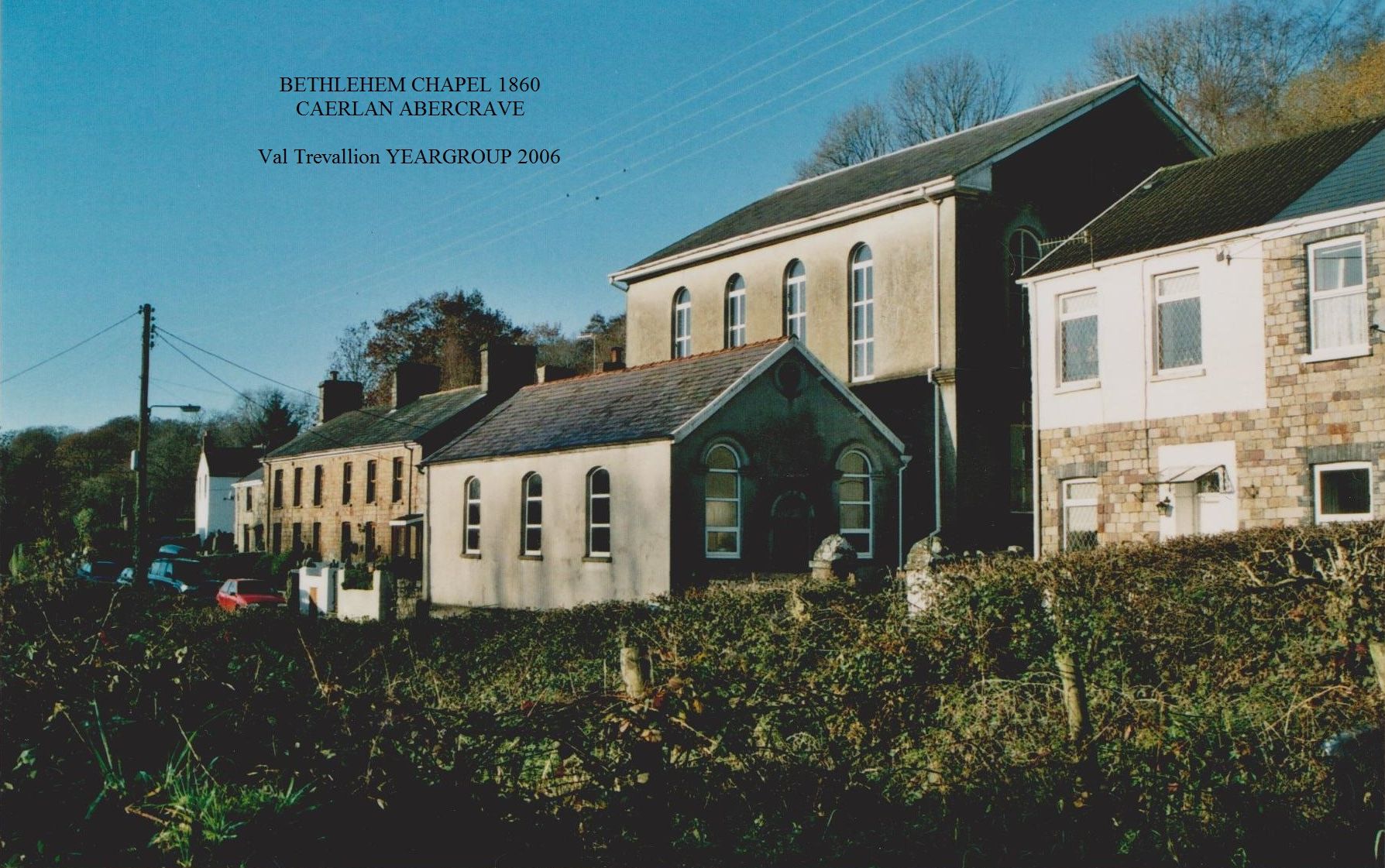
A good view of Bethlehem Chapel, Caerlan, from an oblique angle, showing how it fits into its surroundings.
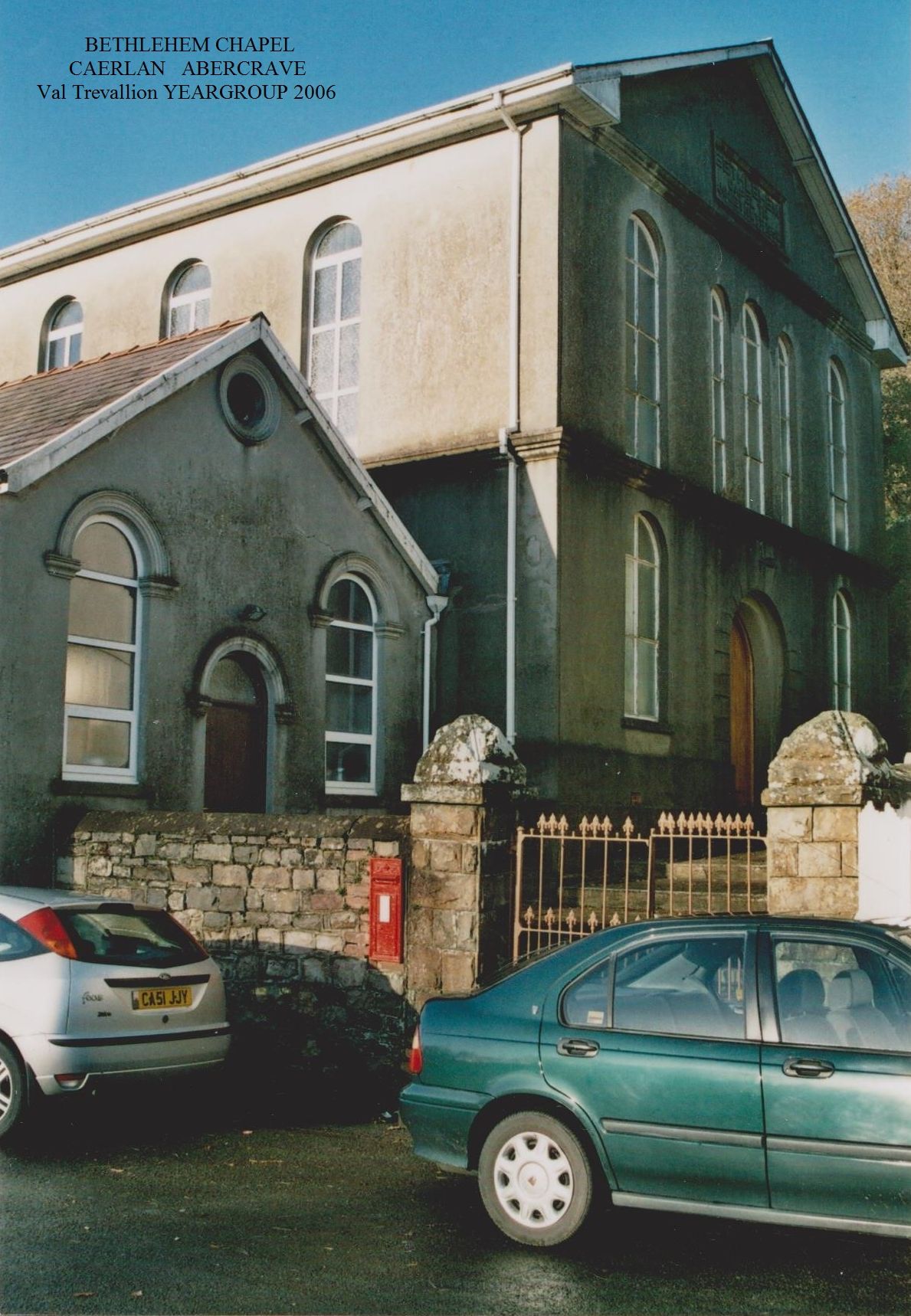
The entrance to Bethlehem Chapel up a small flight of steps from the main road running through Caerlan.
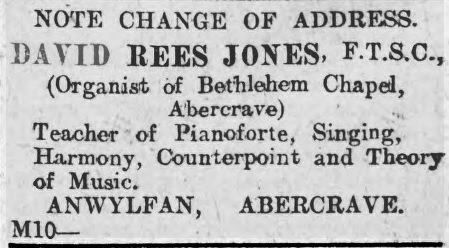
From the Llais newspaper 21st April 1917 comes the change of address notice for David Rees Jones, the organist of Bethlehem Chapel, which the notice refers to as being in Caerlan, Abercrave. As well as being the organist, he was also a piano, singing and music theory teacher. His new residence is described as being 'Anwlfan', Abercrave, presumably the name of a house.

Inside Bethlehem Chapel, from the book about local chapels, written in Welsh, "Undeb yr Annibynwyr Cymraeg cyfarfodydd Ystradgynlais a'r cylch"
Ministers of Bethlehem Chapel
Bethlehem Chapel produced in Welsh a history of their cause for their centenary in 1861. From this book we have extracted the photographs below of the four main ministers, plus the front cover of the book itself.
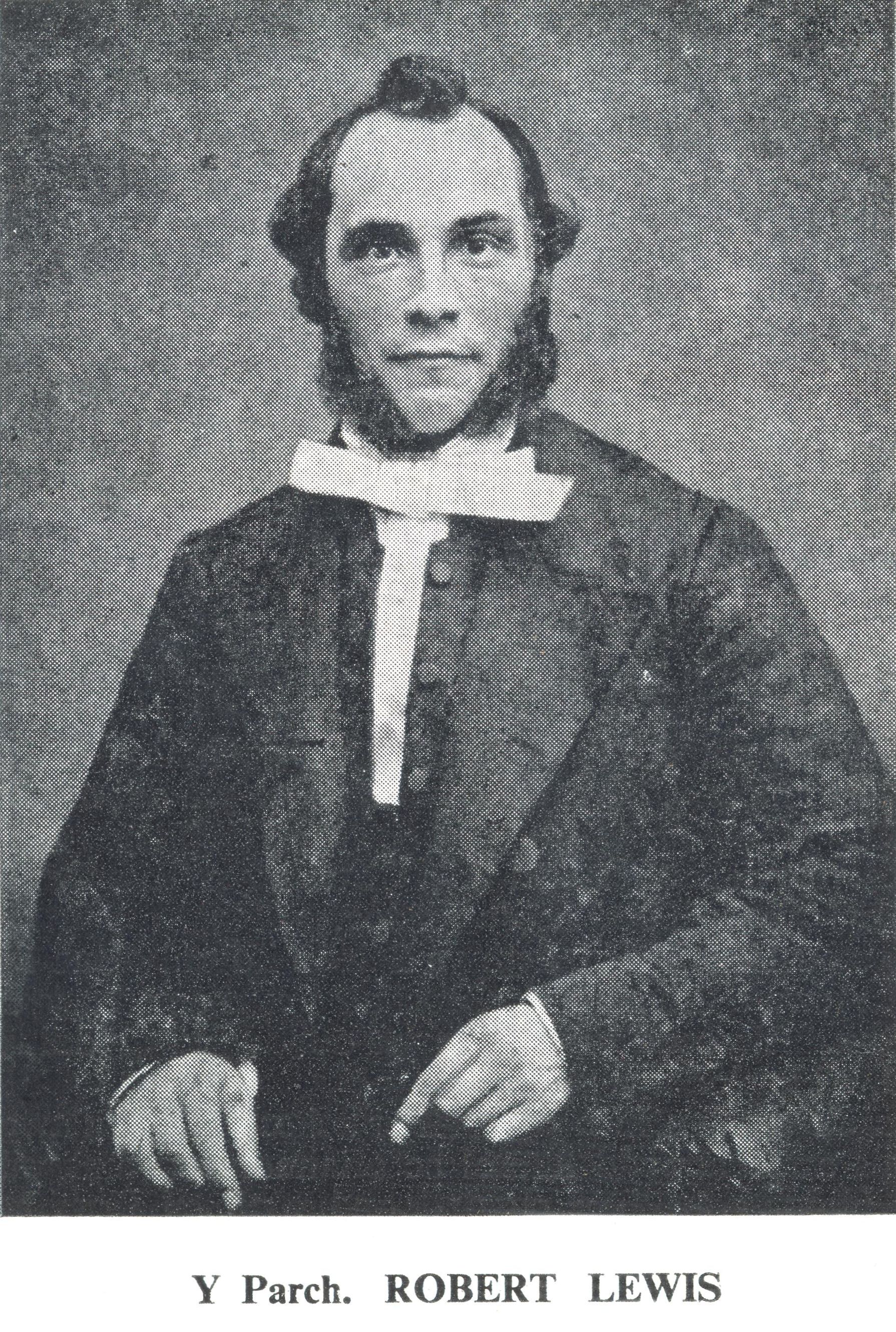
|
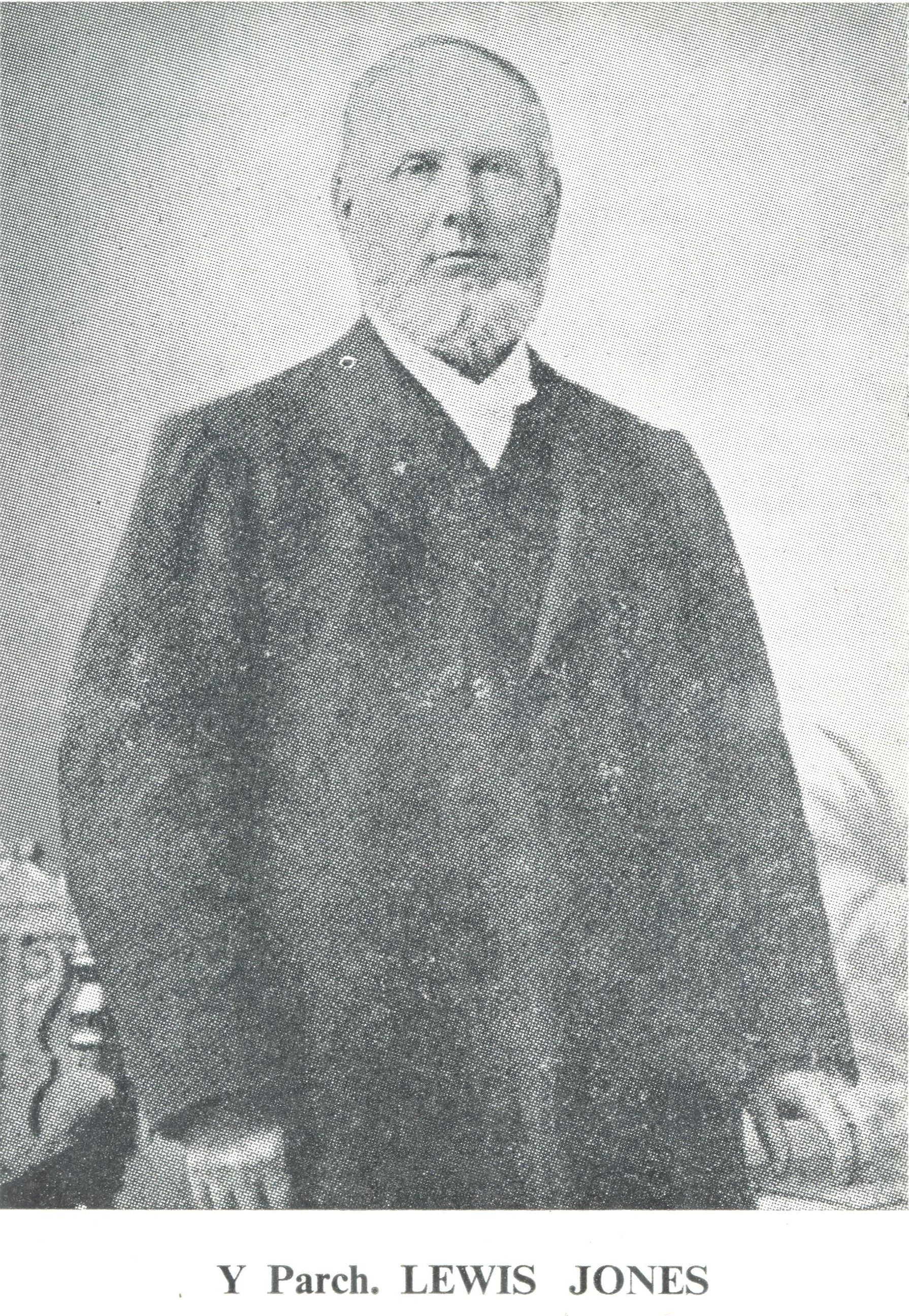
|
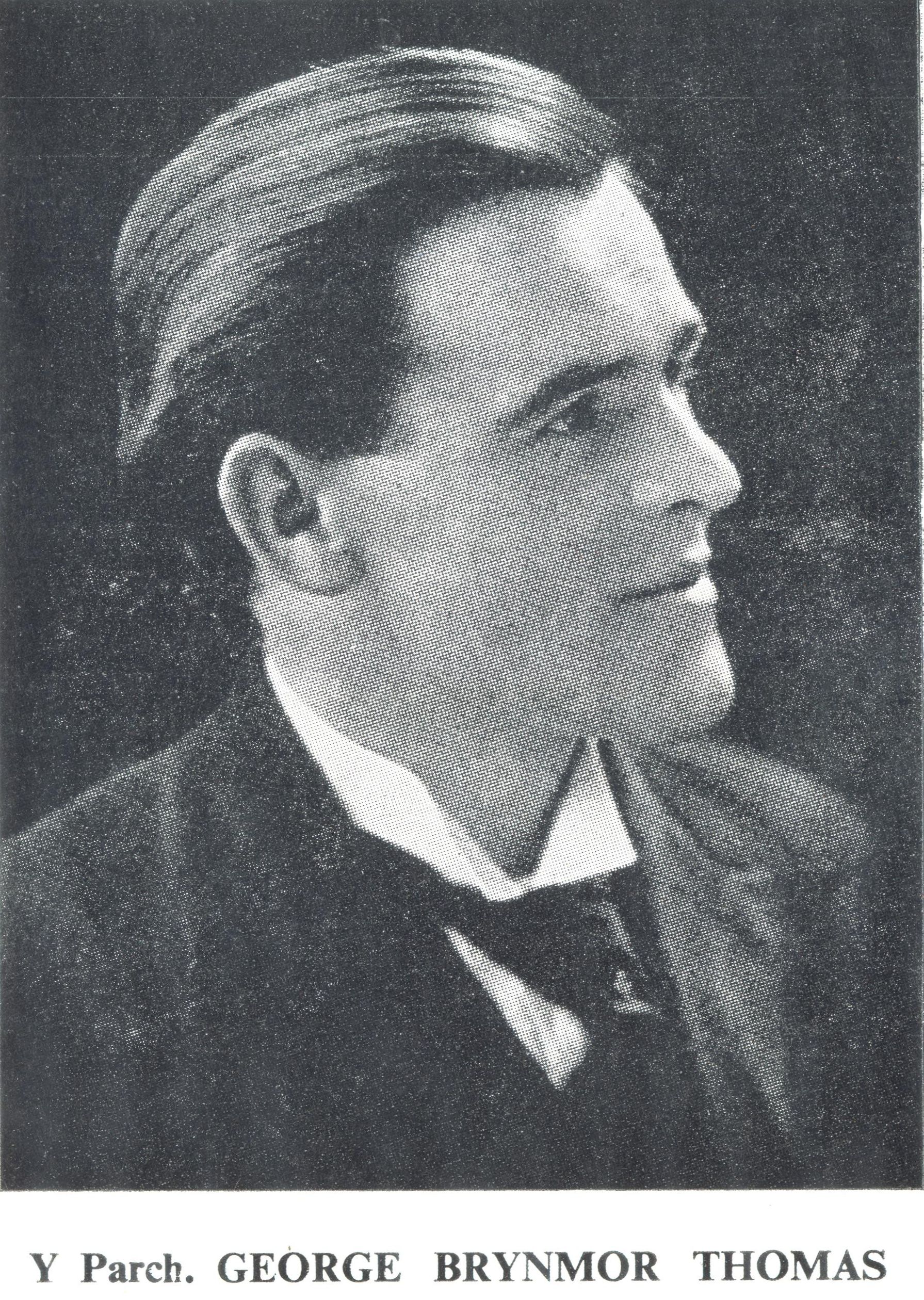
|
Robert Lewis
|
Lewis Jones
|
George Brynmor Thomas
|
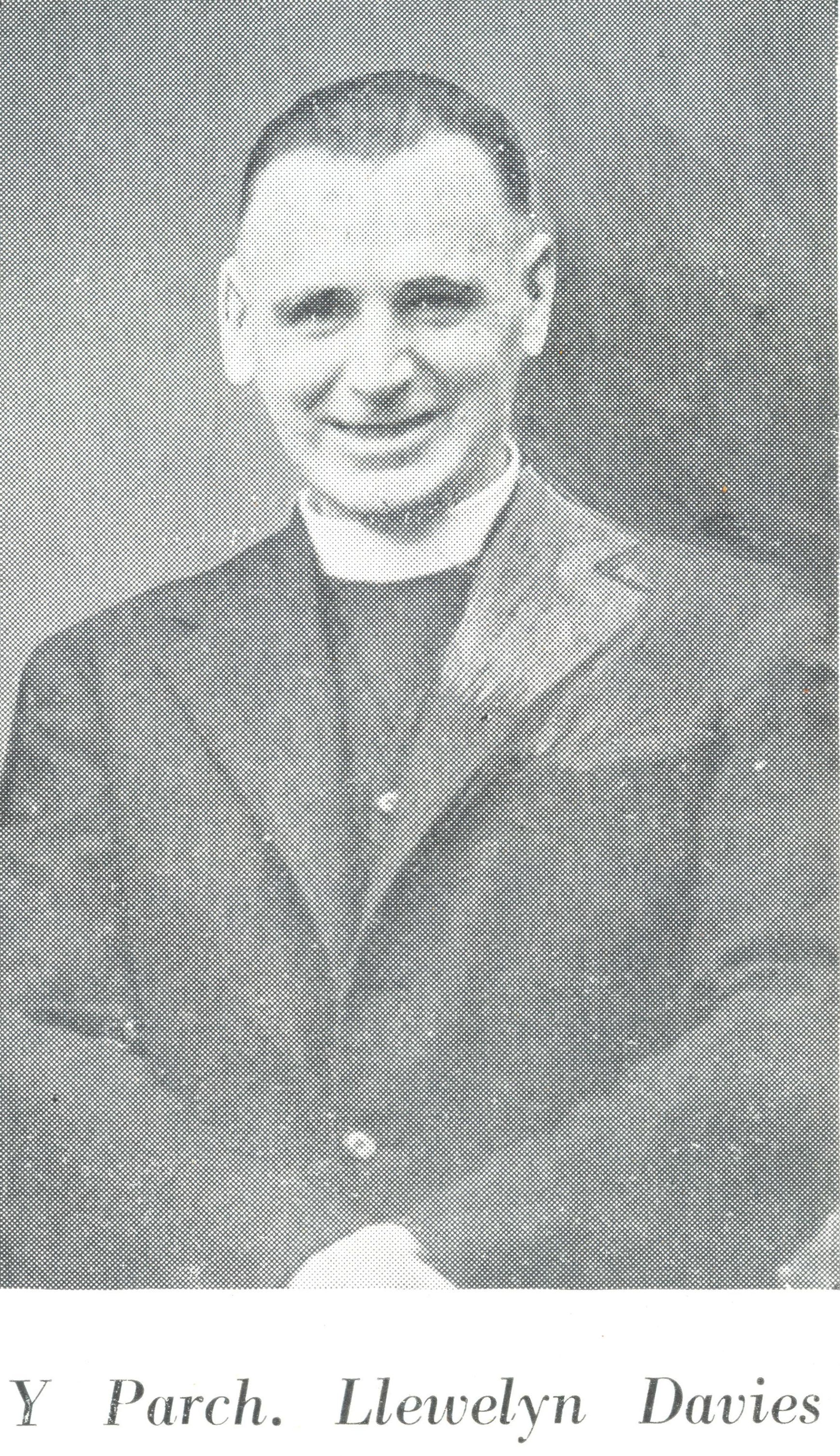
Llewelyn Davies
|

Interestingly, the chapel viewed itself as being in Abercrave, calling its centennial book "EGLWYS BETHLEHEM ABER-CRAF ... 1861-1961" |
Death of Rev Llewelyn Davies
From The Voice, Friday January 4th 1957:-
Minister Found Dead In Bed
The sudden death took place last Saturday of the Rev Llewelyn Davies, aged 60, of Oakfield, Penrhos. He retired in his usual health on Friday night and was found dead bed on Saturday morning. He had been the minister of Bethlehem Congregational Chapel, Caerlan, Abercrave, for the past 20 years.
Mr Davies was a native of Coed Poeth, Wrexham and had previously held a pastorate at Holyhead, Anglesey for 10 years.
He served in the forces in the 1914-18 war, joining up when he was 17 years of age. He suffered from the effects of gas and frostbite, while serving in France and this undoubtedly had an effect on his health.
During the National Eisteddfod at Ystradgynlais, Mr Davies was the Secretary of the Gorsedd Committee.
He was a strong and capable preacher and his services at the chapels in the district were very much appreciated by the congregations. He was a well-read scholar and his death will be a loss to the district.
A service was held in Bethlehem Chapel on Wednesday and the funeral took place yesterday, Thursday.
Burial was at Utica Congregational Chapel cemetery, Gelli-Lydan, Blaenau Ffestiniog, North Wales.
The Life of the Chapel
The local Llais newspaper, frequently has small articles on the everyday goings-on in the local chapels. A few selected articles below give the flavour.
From the Labour Voice, 26th July 1913:-
On Thursday, Bethlehem Sunday School travelled by train to Mumbles, the occasion being the annual treat. Favoured by delightful weather, a very pleasant time was spent. The return journey was made by the 9 o'clock train, and all reached home safely, tired but happy.
From the Labour Voice, 25th January 1919:-
After 59 years of faithful service as secretary to the Bethlehem Congregational Church, Mr John Powell, Bridgend House, has now resigned, having attained the ripe age of 87 years. His son-in-law, Mr George Williams, has been appointed to fulfil the duties in his stead.
The Labour Voice newspaper, 13th January 1923 recorded two stories about Bethlehem Congregational Church:-
THE NEW ORGANIST
Mr Dannie Morgan, Cwmgiedd, the newly-appointed organist for Bethlehem Congregational Church , presided at the organ for the first time on Sunday last and performed his duties in a commendable manner.
A GOOD START
Rev G.B. Thomas, pastor at Bethlehem Congregational Chapel, received 17 new members to the church on Sunday evening last. A good beginning for the New Year.
From the Labour Voice, 13th November 1926:-
ANNIVERSARY SERVICES
The members of Bethlehem Congregational Chapel will hold their anniversary services on Sunday next, when Keri Evans, Carmarthen, is expected to preach throughout the day.
Ystradgynlais - South Wales

Coelbren
Crynant
Cwmllynfell
Email Yeargroup:
yeargroup@hotmail.co.uk
Email Wolfian Design:
webdesign@wolfianpress.com

Click the cover to purchase the paperback
How To Write Alternate History is a series of articles by Grey Wolf, examining subjects such as the identity of man, whether man makes the weather, how the everyday in an alternate world is going to be changed and what names for music, vehicles, weapons etc would be different.

























